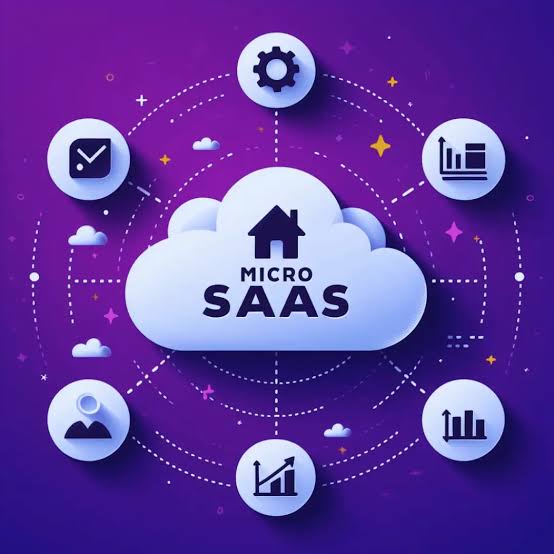Micro SaaS products are taking the world by storm. Unlike traditional SaaS (Software as a Service) products that cater to large enterprises and encompass broad functionalities, Micro SaaS focuses on niche markets with specific needs. This focus not only makes it easier to develop but also allows for quicker growth and higher profitability. If you’re an entrepreneur, startup enthusiast, or someone fascinated by SaaS, this guide will show you how to build a profitable Micro SaaS business from scratch.
Understanding Micro SaaS and Its Growing Popularity
Micro SaaS is a smaller, more focused version of traditional SaaS. These products usually target a very specific problem or niche market. They require minimal initial investment and have lower operation costs, making them attractive to budding entrepreneurs. With the increasing use of digital tools, the demand for specialized software solutions has risen, creating ample opportunities for Micro SaaS businesses.
Understanding the Target Market and Identifying Niche Opportunities
The key to a successful Micro SaaS business lies in understanding your target market. Identify a specific problem that a small group of people or businesses face. This could be something as simple as a tool to organize social media posts for small businesses or a more technical solution like an API for developers.
Steps to Identify Niche Opportunities:
- Research Your Interests: Start with areas you are passionate about. If you’re interested in social media, think of tools that could simplify social media management.
- Validate the Problem: Use forums, surveys, and social media to validate that the problem exists and people are looking for a solution.
- Analyze Competitors: Look at existing solutions. Understand their strengths and weaknesses to identify gaps in the market.
Building the Minimum Viable Product (MVP) for Your Micro SaaS Business
Your MVP is the simplest version of your product that solves the core problem for your target audience. The aim is to launch quickly and gather feedback.
Steps to Build Your MVP:
- Define Core Features: List the essential features that solve the problem.
- Choose the Right Tech Stack: Select tools and technologies that allow for quick development.
- Develop and Test: Build your product and test it thoroughly to ensure it works as intended.
Pricing Strategies for Micro SaaS to Maximize Profit
Pricing can make or break your Micro SaaS business. Your pricing strategy should reflect the value you provide and be competitive within your market.
Effective Pricing Strategies:
- Free Model: Offer a basic version for free and charge for premium features.
- Tiered Pricing: Provide different pricing tiers based on features or usage levels.
- Lifetime Deals: Offer one-time payment options for early adopters to generate initial revenue.
Leveraging Automation and Outsourcing for Efficiency
Running a Micro SaaS business efficiently is crucial for profitability. Automation and outsourcing can help you manage operations without the need for a large team.
Tips for Automation and Outsourcing:
- Automate Repetitive Tasks: Use tools like Zapier or Integromat to automate tasks like email marketing and customer onboarding.
- Outsource Non-Core Activities: Hire freelancers for tasks like support, content creation, and design.
Marketing Your Micro SaaS on a Budget
Marketing doesn’t have to be expensive. With the right strategies, you can effectively reach your target audience and generate leads.
Cost-Effective Marketing Strategies:
- Content Marketing: Create valuable content related to your product. Blog posts, tutorials, and case studies can attract organic traffic.
- Social Media: Use platforms like Twitter, LinkedIn, and Facebook to engage with your audience and promote your product.
- Email Marketing: Build an email list and send regular updates, offers, and valuable content to keep your audience engaged.
The Importance of Customer Feedback and Continuous Improvement
Customer feedback is invaluable for the growth and improvement of your Micro SaaS product. Regularly gather feedback and make necessary adjustments.
How to Gather and Use Feedback:
- Surveys and Polls: Use tools like SurveyMonkey to collect customer opinions.
- User Interviews: Conduct interviews to understand user experiences and pain points.
- Analytics: Use analytics tools to monitor user behavior and identify areas for improvement.
Scaling Your Micro SaaS Business Sustainably
Once your product is validated and you have a steady user base, it’s time to scale. Focus on sustainable growth to ensure long-term success.
Scaling Strategies:
- Improve Product Features: Continuously add features based on user feedback.
- Expand Marketing Efforts: Invest in paid advertising and explore new marketing channels.
- Optimize Operations: Streamline processes and enhance automation to handle increased demand.
Conclusion and Encouragement for Aspiring Micro SaaS Entrepreneurs
Building a profitable Micro SaaS business from scratch is not only possible but also incredibly rewarding. By focusing on a specific niche, developing a solid MVP, and leveraging effective marketing strategies, you can create a successful Micro SaaS product.
The world of Micro SaaS offers endless opportunities. Take the plunge, start small, and continuously improve. The key is to stay flexible, listen to your users, and adapt as you grow. Your Micro SaaS success story could be just around the corner. Happy building!


